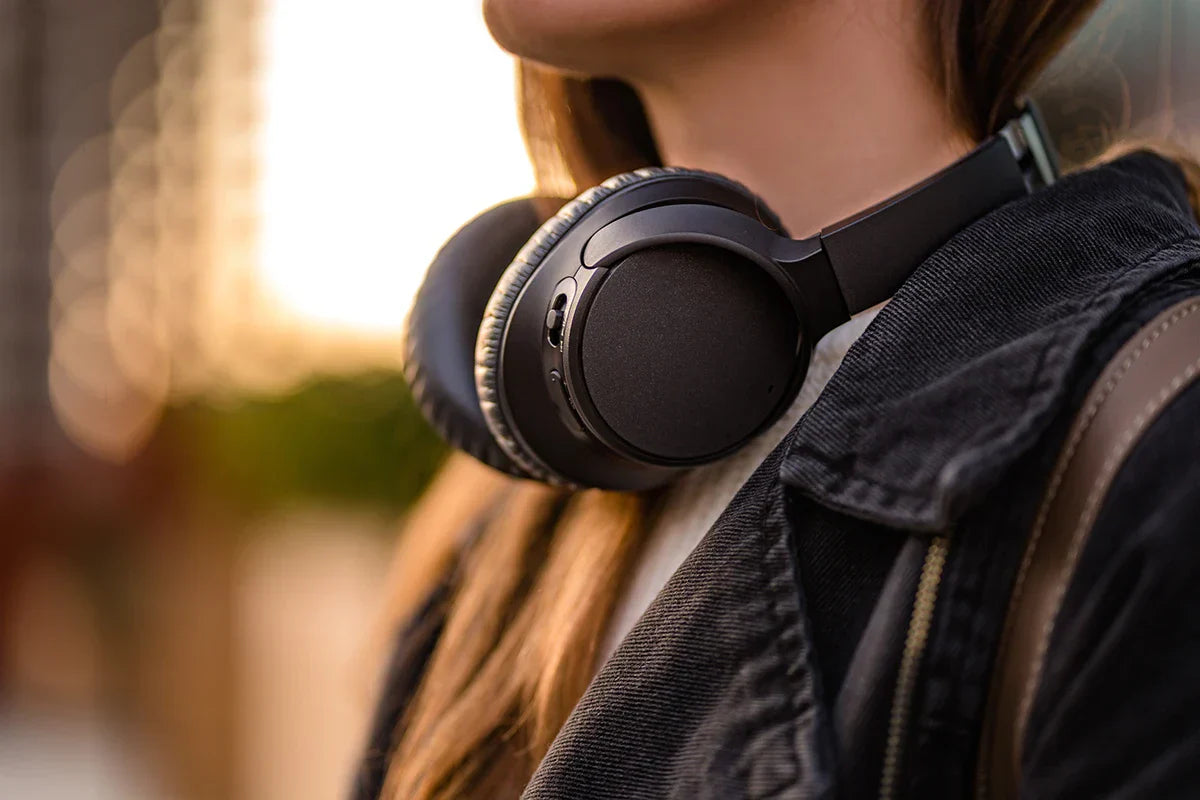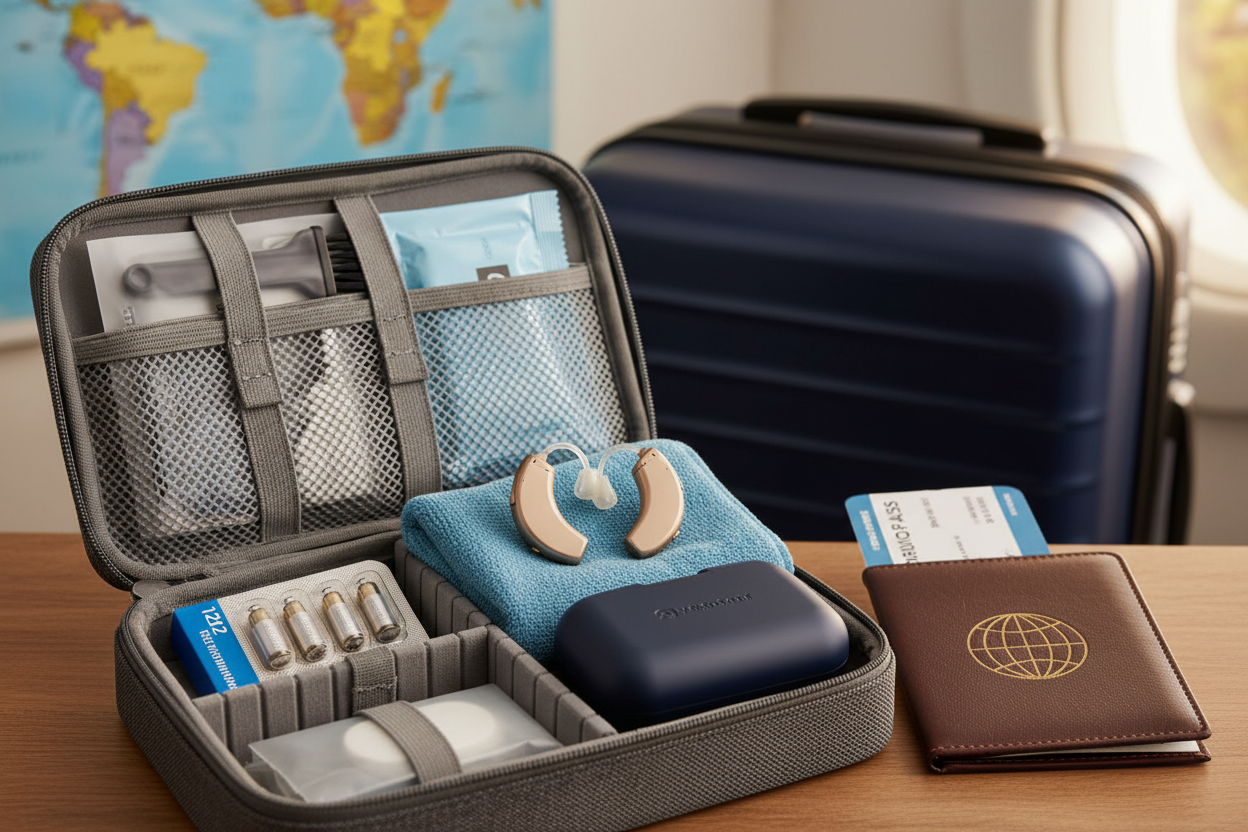OKB Hearing Aids are designed for simplicity—but like any device, you may run into occasional technical issues. Whether it's a pairing problem, charging issue, or audio glitch, most problems have straightforward solutions that don’t require professional servicing.
This guide combines insights from OKB's support documentation with practical troubleshooting steps to help you fix common issues on your own.
1. The Controller and Earphones Have Never Been Paired
Description:
Your hearing aids and controller are brand new or were replaced, and the devices aren’t connected.
Possible Cause:
The earphones have been replaced with a new set and need to be paired again.
Solution:
- Open the lid of the charging case. The blue indicator light on the earphones will flash, and you’ll hear the "Power on" prompt.
- Wait until the amber and blue lights flash alternately, and the device says "Pairing."
- Power on the controller.
- Hold the pairing button on the controller for 5 seconds. The pairing icon will appear on screen.
- Once paired, the pairing icon will change to the connection icon and you’ll hear the “Connected, connected” prompt.
2. Devices Were Previously Paired But Won’t Reconnect
Description:
The controller and earphones were paired previously but won’t re-pair now.
Possible Cause:
The Bluetooth memory might be full or jammed due to prior pairings.
Solution:
- Hold the pairing button on the controller for 10 seconds until you see “Clear” on the screen. The controller will turn off.
- Open the lid of the charging case. The earphones should flash blue and say “Power on.”
- Wait until the amber and blue lights flash alternately. You'll hear “Pairing.”
- Power on the controller.
- The controller will begin pairing automatically.
- Once paired, the connection icon will appear and you’ll hear “Connected, connected.”
3. Loud Feedback or Whistling Noise
Description:
You hear a high-pitched noise when wearing the hearing aids, especially when adjusting them or placing your hand near your ear.
Possible Cause:
The earphones are too close to the controller, especially when the volume is high.
Solution:
Increase the distance between the controller and the earphones. Adjust the volume to a lower level to minimize feedback. Ensure the hearing aids are inserted correctly and form a proper seal with your ears.
4. Controller Won’t Connect to Your Mobile Phone
Description:
You’ve turned on Bluetooth, but the controller won’t appear in your mobile device’s list.
Possible Cause:
The controller is still connected to another phone or audio source.
Solution:
- Disable Bluetooth on any previously paired device (e.g., a second phone or tablet).
- Enable Bluetooth on your mobile device.
- Reconnect the controller by following the “Bluetooth Pairing Instructions” in the support guide.
5. No Sound During Phone Calls or Streaming
Description:
Even when Bluetooth is connected, there's no audio in call or media mode.
Possible Cause:
The Bluetooth device is muted, or volume hasn’t been adjusted from the correct source.
Solution:
Ensure that volume is turned up on your mobile device—not just the hearing aid controller. During Bluetooth streaming or calls, volume must be controlled directly from your connected phone or tablet.
6. No Sound or Very Weak Volume
Description:
The device powers on, but you don’t hear anything through the earphones.
Possible Causes:
- Volume is set too low
- Wax buildup is blocking the speaker
- The receiver isn’t properly seated in the ear
Solution:
- Adjust the volume using the controller or onboard buttons.
- Check the receiver tip for blockage and gently clean it with a dry brush.
- Try changing the ear tip size for a better seal.
- Ensure the earphones are inserted correctly and not loose.
7. Charging Issues or Inconsistent Power
Description:
Your hearing aids won’t charge or only one side charges.
Possible Causes:
- Misalignment in the case
- Dirty charging contacts
- Faulty USB cable or port
Solution:
- Place both devices into the case and make sure the charging lights turn on (red while charging, green when full).
- Gently clean the charging pins on both the hearing aids and the case.
- Use a different USB-C cable and wall outlet to rule out hardware issues.
- Avoid using a computer port, as power output may be insufficient.
Additional Guidance
If none of the steps above resolve your issue:
- Reboot your controller and earphones and repeat the pairing process from scratch
- Check for firmware updates if your controller supports them
- Confirm that you are not pairing multiple Bluetooth audio sources simultaneously
Note: Do not attempt to repair defective devices yourself. If the issue persists, consult the OKB Hearing Support team or return the device through your distributor.
Read More On: https://okbhearing.com/pages/okb-support
Closing Thoughts
Most OKB Hearing Aid issues—whether it’s Bluetooth pairing, sound loss, or charging—can be fixed by following a clear, step-by-step process. Understanding these troubleshooting basics empowers you to get back to using your hearing aids quickly, without needing a service appointment.
If you’ve followed the full troubleshooting guide and still experience problems, reach out to the OKB support team for further assistance or product replacement.
Contact Us At: https://okbhearing.com/pages/contact






Compartir:
Top 5 Rechargeable Hearing Aids in 2025: Expert Picks and Reviews
How to Set Up and Use OKB Hearing Aids: A Step-by-Step Guide